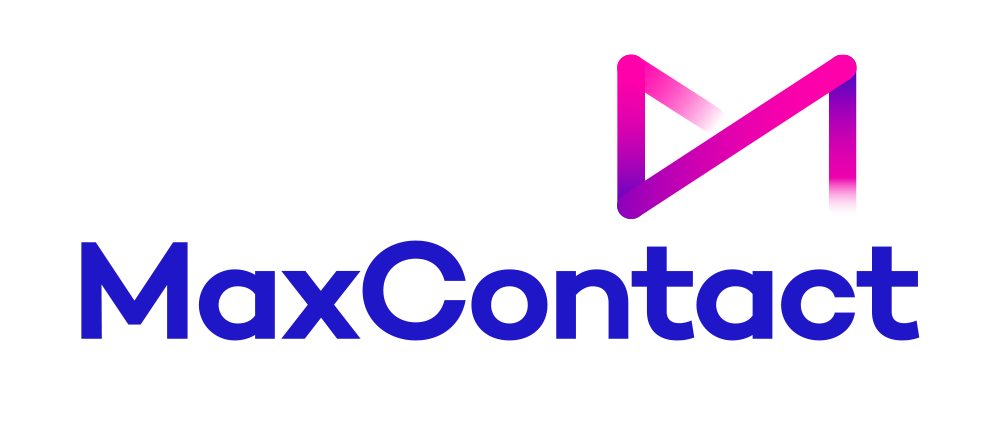50 Customer Satisfaction Survey Questions
Companies often overestimate customer satisfaction, assuming their products and services are meeting expectations. A 2024 study by Emplifi and IDC reveals a disconnect between companies' perceptions of their customer experience (CX) and customers' actual experiences. 87% of companies believe they provide an excellent customer experience, but only 11% of customers agree with this assessment.
If you want loyal customers and glowing reviews, it starts with understanding how your customers feel about their experience. To improve customer experience, you need to collect customer feedback. That’s where customer satisfaction surveys come in. But what should you ask your customers? In this article, we look at 50 customer satisfaction survey question examples to help you gather meaningful feedback and make data-driven decisions.
Why is Asking the Right Questions Important?
Asking the right customer satisfaction survey questions can help you get quality feedback. Thoughtfully crafted questions help you figure out how customers truly feel about your offerings, highlighting strengths and areas for improvement. Vague or unclear questions can lead to misleading insights.. By asking clear, relevant questions at the right point in the customer journey, you can gather feedback that drives better decisions, increases retention and long-term growth.
In addition to crafting thoughtful questions, it's important to choose the right metric for measuring customer satisfaction. Two common metrics are the Net Promoter Score (NPS) and Customer Satisfaction Score (CSAT), each offering their insights. Learn more about the differences between NPS and CSAT and how to choose the best one for your business.
CSAT Survey Examples
There are a lot of survey question types, especially when you consider all the possible variations and combinations. However, not all of those question types are suitable for a customer satisfaction survey. We typically rely on just a few key types of questions in these surveys:
These surveys ask customers to rate their satisfaction on a predefined scale, such as 1-5 or 1-10. They are great for measuring overall satisfaction or specific aspects of the customer experience. NPS surveys, for example, use a rating question.
Example 2: Multiple Choice Survey
This is a similar survey to the one above; however, it is laid out slightly differently. You can also add a feedback section to allow your customers to express their thoughts and opinions about your business. These questions allow customers to choose from predefined answers. They are useful when you want to narrow down the responses to specific options, such as categories or preferences.
Example 3: Binary Scale Survey
This is an example of what a binary scale survey looks like. You could use yes or no answers instead of smiley/sad faces; however, this completely depends on personal preference. Binary scale surveys can have many benefits as it is visual and quick to complete, which means that more people may feel inclined to vote as it doesn’t take too much of their time.
Example 4: Open-Ended Questions
Open-ended questions are questions that require customers to respond to in their own words. It is ideal as it provides you with a better understanding of your customer's thoughts, feelings and opinions. Here are some examples of open-ended questions:
- What improvements would you like to see on our website?
- How would you describe your recent experience with us?
- What did you think about our new product?
Example 5: Visual Rating Survey
A visual rating survey uses stars or thumbs up/down. This survey is quick and easy to use and can be used to rate a range of different things, such as customer service and how satisfied they are with a certain product. Here are some examples of CSAT survey questions:
- How would you rate the support you received?
- On a scale of 1-10, how would you rate the quality of our customer service?
- How likely are you to recommend our company to your friends/family?
- How would you describe your satisfaction with our company?
- How satisfied are you with the speed and quality of our services
To further improve how you approach customer experience and discover real-world applications, explore these customer experience use cases from MaxContact.
What Are the Benefits of Using a CSAT Survey?
Now that you have a better understanding of what a CSAT survey is, let’s discuss the benefits:
CSAT Surveys Can Identify Areas of Improvement
Once your customer satisfaction survey has been completed, you will be able to understand what you are doing well and what you could improve on. For example, if you created a survey based on how satisfied customers were with a certain product, and the majority were unsatisfied, then you will be able to understand why this is and create a plan to improve it.
To further understand why your customers voted low or high, you can add a text box that allows them to leave comments regarding why they voted, what they did or what they think you could improve on.
CSAT Surveys Can Help You Build Customer Loyalty
Providing your customers with a CSAT survey shows that you value their opinion and that you want to do everything you can as a business to ensure they are satisfied with your services.
These surveys also allow you to engage with customers, which is ideal as it provides you with insights about how your customers feel about your business.It also helps you identify what customers are more likely to leave your business for your competition. This way you can come up with ways to retain these customers, such as:
- Providing them with deals
- Communicating with them
- Personalising their experience
- Simplifying their journey
- Gathering feedback
They Reduce Bad Word of Mouth
Running a business can be hard enough, which is why it is important to do everything you can to reduce bad word of mouth. Not only can this affect your business, but you can also lose customers and sales. A CSAT survey allows your customers to voice their opinions based on how they feel about your company. Did you know, 47% of customers who have a service complaint or are unhappy with a product will voice it on social media? This is why it is so important that you provide your customers with a safe space to explain why they are unhappy with a product and what you, as a business, could do to improve their experience. This way, you are reducing bad word of mouth and improving customer satisfaction.
50 Customer Satisfaction Survey Questions
So this is the part you’ve been waiting for. Here we have a list of customer satisfaction survey questions we think would be valuable to ask your customers. To help you find the most relevant ones, we have organised the list based on different survey goals. Below, you’ll find CSAT (Customer Satisfaction Score) questions, open-ended feedback questions, product and service experience questions, loyalty questions and more.
These questions measure how satisfied a customer is with an interaction, product, or service.
- How satisfied were you with your recent experience?
- How would you rate your satisfaction with our service today?
- Did we meet your expectations during this interaction?
- On a scale of 1 to 5, how satisfied are you with the support you received?
- How satisfied are you with the resolution to your issue?
- How would you rate your overall satisfaction with our company?
- How did our product/service meet your needs?
- Based on your experience, how satisfied are you with our team’s professionalism?
- How happy are you with the delivery time of your order?
- How well did our product/service work for you?
Open-Ended Feedback Questions
Open-ended questions give customers space to express their thoughts in their own words, great for gathering qualitative insights.
- What did you enjoy most about your experience?
- What could we have done better?
- Why did you give us that score?
- Is there anything you’d like to see improved?
- Do you have any suggestions for how we can enhance your experience?
- What would make you choose us again?
- Was anything missing from your experience today?
- Is there anything you’d like to tell our team?
- What was the highlight of your interaction?
- What can we do to earn a 10/10 rating from you?
Customer Service & Support Questions
Use these after a service interaction to evaluate how well your team handled the query.
- How quickly did you receive assistance?
- How knowledgeable was the representative you spoke to?
- Did the team member understand your issue?
- Were your questions answered to your satisfaction?
- How polite and friendly was our customer support team?
- Was your issue resolved promptly?
- Did you feel valued during your interaction?
- How easy was it to reach the right person?
- Was the support experience better, worse, or the same compared to your expectations?
- Would you feel confident reaching out to our team again?
Product & Service Experience Questions
Perfect for understanding how users feel about what you sell.
- How satisfied are you with the quality of the product/service?
- How easy was it to use our product?
- Did our product solve the problem you bought it for?
- How likely are you to reorder this product/service?
- How would you rate the value for money?
- Were the instructions or onboarding process clear?
- How well did our product integrate with your existing tools/systems?
- Did our service live up to your expectations?
- What feature did you find most helpful?
- Was there anything confusing or frustrating about using our product?
Loyalty & Recommendation Questions
These questions help gauge customer loyalty and potential for referrals, especially useful for Net Promoter Score (NPS).
- How likely are you to recommend us to a friend or colleague?
- Would you consider buying from us again?
- How does our product/service compare to others you’ve used?
- What would make you more likely to recommend us?
- Have you recommended our business to anyone recently?
- Would you describe yourself as a loyal customer?
- What makes you stay with our brand?
- How long have you been using our product/service?
- Do you see yourself continuing to use our services in the future?
- On a scale of 1 to 10, how likely are you to remain a customer in the next year?
Rules For Writing Customer Satisfaction Survey Questions
The questions we’ve listed above serve as a great reference for creating customer satisfaction surveys. However, we know that this list doesn’t cover every aspect of customer satisfaction you might want to assess. With that in mind, we’re wrapping up this guide with four rules to remember when crafting your customer satisfaction survey questions.
- Keep Questions Simple and Straightforward: Avoid complicated words or jargon. Make sure the questions are easy to understand so customers can answer clearly without any confusion.
- Ask One Thing at a Time: Each question should focus on one topic. Asking multiple things at once can lead to unclear answers and confuse respondents.
- Use Neutral Language: Don’t ask leading or biased questions. Keep the wording neutral so customers feel comfortable giving honest feedback without being steered toward a specific answer.
- Be Specific and Relevant: Tailor questions to match the customer’s experience. Focus on the situation or interaction being surveyed, as specific questions are more useful than vague ones.
- Offer a Balanced Rating Scale: When using scales (like 1-5 or 1-10), make sure the range is balanced with an equal number of positive and negative options. This lets customers fairly represent their experience.
- Keep It Short: Avoid long surveys that customers may get bored with. Stick to the questions that will provide valuable data for decision-making.
- Mix Up Question Types: Use a variety of question types, such as ratings, multiple choice, and open-ended questions, to get both quantitative and qualitative feedback.
- Make It Easy to Answer: Offer clear options for multiple-choice or rating scale questions. The simpler the answers, the more accurate your data will be.
Turning Survey Responses into Actions
These customer satisfaction survey questions are perfect for assessing your customers' happiness with your product. Once you begin gathering responses, it’s important to act fast. Acknowledge the feedback, reassure your customers that you’re addressing their concerns, and identify trends. Escalate common issues to the right departments for action. Taking quick, meaningful steps shows your commitment to improving the customer experience, building loyalty, and encouraging repeat business. Contact us today to find out how MaxContact can improve your customer journey and drive better results.
.png)
From the blog







